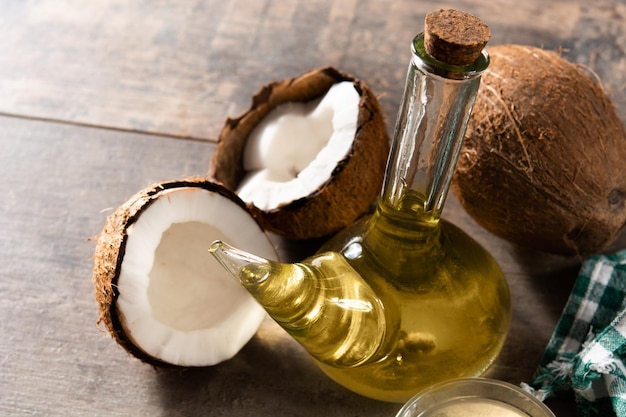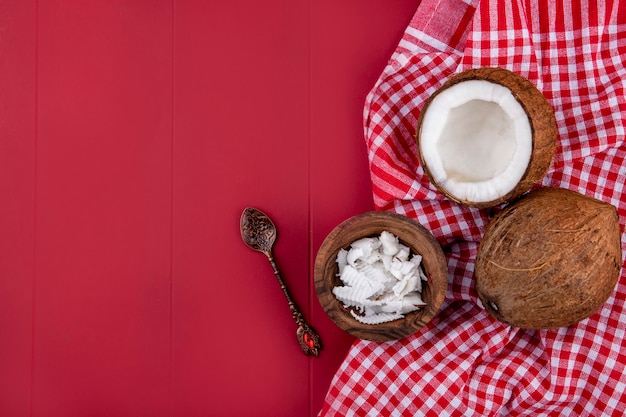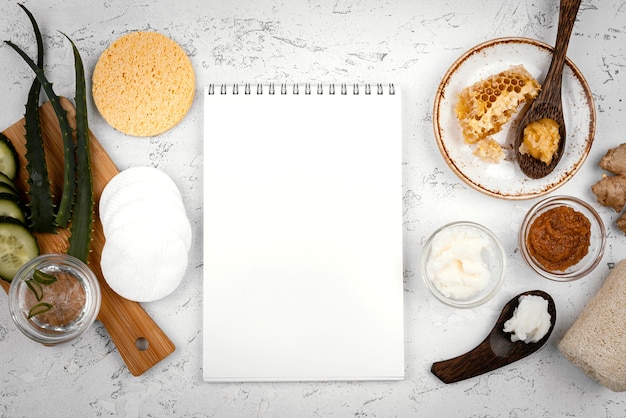(Part 1) Understanding Your Coconut Oil

The Different Types: Refined vs. Unrefined
Let's start with the basics. Coconut oil is extracted from the white flesh of mature coconuts, making it a natural, plant-based oil. It's become popular due to its versatility and potential health benefits. But here's the key: there are two main types of coconut oil, each with its own distinct characteristics.
First, we have refined coconut oil, which has been processed to remove its natural flavor and aroma. It's virtually odorless and tasteless, making it perfect for baking, where you don't want any coconut flavor interfering with your recipes.
Then there's unrefined coconut oil, also known as virgin coconut oil. This is the unprocessed version, retaining that delicious, distinct coconut flavor and aroma. It's ideal for cooking at lower temperatures or for adding a tropical touch to your dishes. The taste is definitely noticeable, so it’s best to use it when you want that coconut flavor to shine.
Why Choose Coconut Oil?
So, why all the fuss about coconut oil? It's more than just a trend. It’s a healthy and flavorful option that offers several benefits:
- Packed with MCTs: Coconut oil is rich in medium-chain triglycerides (MCTs), a type of fat that’s easily digested and utilized for energy. This can be a real advantage for your body, especially if you’re looking for a healthy way to fuel your workouts or boost your metabolism.
- Lauric Acid: Coconut oil is also a good source of lauric acid, a fatty acid with antibacterial and antiviral properties. This can help to support your immune system and fight off infections.
- Taste and Versatility: Let's not forget the delicious flavor! Coconut oil adds a unique and tropical twist to your dishes, especially when using the unrefined variety. It works wonderfully in both sweet and savory dishes, opening up a world of culinary possibilities.
Choosing the Right Coconut Oil for You
Ready to embrace the coconut oil lifestyle? Picking the right one is crucial. Start by checking the label. Look for organic and cold-pressed coconut oil for the best quality. Then, it all comes down to your preferences:
- Neutral Flavor: If you’re looking for a flavorless oil for baking or cooking where you don't want a coconut taste, go for refined coconut oil.
- Coconut Flavor: If you crave that distinct coconut taste and aroma, unrefined virgin coconut oil is your best bet. It's perfect for dishes where you want that tropical flavor to stand out.
(Part 2) Cooking with Coconut Oil: From Simple Techniques to Advanced Applications

Melting and Heating Coconut Oil: Understanding smoke points
Coconut oil is solid at room temperature, but it melts easily. Here's how to melt it:
- Saucepan Method: Place it in a saucepan over low heat, stirring occasionally until completely melted. This is a gentle and controlled way to melt it.
- Microwave Method: You can also melt it in the microwave, but be careful not to overheat it. Heat in short bursts, checking frequently to prevent scorching.
Now, an important factor to consider is the smoke point. This is the temperature at which an oil starts to break down and release harmful chemicals. Coconut oil has a relatively low smoke point compared to some other oils, so it's best to use it at medium heat or lower. High heat can cause the oil to smoke and release potentially harmful substances.
Coconut Oil for Sauteing and Stir-Fries
Coconut oil is fantastic for sauteing vegetables and creating vibrant stir-fries. Its flavor adds a delightful richness to your dishes. Just remember to keep the heat medium or low, and be mindful of the smoke point. If you're using unrefined coconut oil, its aroma will be more pronounced, which can be a lovely addition, but be careful not to let it get too overwhelming.
Coconut Oil in Baking: A Tropical Twist
Coconut oil is a game-changer in baking. It adds moisture and a unique flavor to cakes, cookies, and even bread. Here's what to keep in mind:
- Refined vs. Unrefined: Refined coconut oil will not affect the taste of your baked goods. Unrefined coconut oil, on the other hand, will impart that delicious coconut flavor. Choose wisely depending on the desired outcome.
- Solid at Room Temperature: Coconut oil is solid at room temperature, which can alter the texture of your baked goods. Always melt it completely before adding it to your batter or dough. And remember, overheating can affect the flavor of your baked goods, so keep an eye on the heat.
Coconut Oil for Deep-Frying: Achieving Crispy Perfection
Coconut oil is a good choice for deep-frying because it has a higher smoke point compared to some other oils. This allows it to withstand high temperatures without breaking down, resulting in crispy, delicious fried foods. However, keep in mind that its smoke point is still lower than some other frying oils. Don't let it get too hot, and keep a watchful eye on it.
For deep-frying, refined coconut oil is generally preferred, as it won't affect the taste of your food.
(Part 3) Coconut Oil Recipes: A culinary journey Through the Tropics

Let's get into the fun stuff! Coconut oil opens up a world of delicious possibilities. Here are a few recipes to get you started:
1. Coconut Curry: A Flavorful and Aromatic Delight
Coconut curry is a classic for a reason. The rich, fragrant flavors and creamy texture are irresistible. Coconut oil adds depth and richness, while coconut milk creates a luxurious base.
Here's a basic coconut curry recipe to get you started:
Ingredients:
- 2 tablespoons coconut oil
- 1 onion, chopped
- 2 cloves garlic, minced
- 1 inch ginger, grated
- 1 teaspoon curry powder
- 1/2 teaspoon turmeric
- 1/4 teaspoon cumin
- 1 (14-ounce) can coconut milk
- 1 cup chopped vegetables (such as carrots, potatoes, cauliflower)
- 1 cup cooked chicken or tofu
- Salt and pepper to taste
Instructions:
- Heat the coconut oil in a large saucepan over medium heat.
- Add the onion, garlic, and ginger, and cook until softened, about 5 minutes.
- Stir in the curry powder, turmeric, and cumin, and cook for 1 minute.
- Pour in the coconut milk, and bring to a simmer.
- Add the vegetables and chicken or tofu, and simmer until the vegetables are tender, about 15 minutes.
- Season with salt and pepper to taste.
- Serve over rice or naan bread.
2. Coconut Rice: A Simple and Flavorful side dish
Coconut rice is a staple in many tropical cuisines, and it's incredibly easy to make. Simply replace your usual oil with coconut oil and add a touch of salt and lime juice.
Ingredients:
- 2 tablespoons coconut oil
- 1 cup long-grain rice
- 2 cups water
- 1/2 teaspoon salt
- Juice of 1/2 lime
- Optional: 1/4 cup shredded coconut flakes
Instructions:
- Heat the coconut oil in a saucepan over medium heat.
- Add the rice and cook, stirring constantly, for 1 minute.
- Pour in the water and salt, and bring to a boil.
- Reduce heat to low, cover, and simmer for 15-20 minutes, or until the rice is cooked through and the liquid has been absorbed.
- Fluff the rice with a fork, and stir in the lime juice.
- Garnish with shredded coconut flakes, if desired.
3. Coconut Pancakes: A Tropical Breakfast Treat
Who doesn't love pancakes? Coconut oil elevates them to a whole new level of deliciousness! Simply substitute your usual oil with coconut oil, and enjoy the golden color and tropical flavor.
Ingredients:
- 2 tablespoons coconut oil
- 1 cup all-purpose flour
- 2 tablespoons sugar
- 2 teaspoons baking powder
- 1/2 teaspoon salt
- 1 egg
- 1 cup milk
- Optional: 1/4 cup shredded coconut
Instructions:
- In a large bowl, whisk together the flour, sugar, baking powder, and salt.
- In a separate bowl, whisk together the egg, milk, and coconut oil.
- Pour the wet ingredients into the dry ingredients, and stir until just combined. Don't overmix.
- Fold in the shredded coconut, if desired.
- Heat a lightly oiled griddle or skillet over medium heat. Pour 1/4 cup of batter onto the hot griddle for each pancake.
- Cook for 2-3 minutes per side, or until golden brown and cooked through.
- Serve with your favorite toppings, such as maple syrup, fruit, or coconut yogurt.
4. Coconut Popcorn: A Healthy and Delicious Snack
Coconut oil makes for a healthy and flavorful alternative to traditional popcorn. It adds a touch of sweetness and a delightful crunch.
Ingredients:
- 2 tablespoons coconut oil
- 1/2 cup popcorn kernels
- Salt and pepper to taste
- Optional: 1/4 cup shredded coconut
Instructions:
- Heat the coconut oil in a large saucepan over medium heat.
- Add the popcorn kernels, and shake the pan until the kernels start to pop. Cover the pan with a lid to contain the popping.
- Once the popping slows down, remove the pan from the heat.
- Season with salt, pepper, or your favorite spices.
- Garnish with shredded coconut, if desired.
5. Coconut Chicken: A Simple and Flavorful Meal
This is a quick and easy way to cook chicken with a delightful tropical twist.
Ingredients:
- 2 tablespoons coconut oil
- 2 boneless, skinless chicken breasts
- 2 tablespoons soy sauce
- 1 tablespoon grated ginger
- 2 cloves garlic, minced
- 1/2 teaspoon chili flakes (optional)
- Salt and pepper to taste
Instructions:
- In a bowl, combine the soy sauce, ginger, garlic, chili flakes (if using), salt, and pepper.
- Add the chicken breasts to the marinade, and coat well.
- Heat the coconut oil in a large skillet over medium heat.
- Add the chicken breasts to the skillet, and sear for 3-4 minutes per side, or until cooked through.
- Serve with steamed rice and your favorite vegetables.
(Part 4) Coconut Oil Beyond the Kitchen: From Skin Care to Massage
The versatility of coconut oil extends far beyond cooking. It's a natural wonder that can also enhance your beauty routine.
Coconut Oil for Skin and Hair: A Natural Moisturizer
Coconut oil is a natural moisturizer that can help to reduce dryness and irritation on your skin and hair.
- Body Lotion: Apply a small amount to your skin after showering or bathing. It will leave your skin feeling soft and smooth.
- Face Cream: Use a small amount as a moisturizer, especially if your skin tends to be dry or sensitive.
- Hair Mask: Apply a generous amount to your hair, focusing on the ends. Leave it on for at least 30 minutes, then wash and condition as usual. It will help to condition and nourish your hair.
Coconut Oil for Massage: Relax and Relieve Tension
Coconut oil is perfect for massage, both full-body and targeted. Its warmth and soothing properties can help to relax muscles and relieve tension.
- Full-Body Massage: Warm up a small amount of coconut oil in your hands, and massage it gently into your skin.
- Targeted Massage: Focus on areas of tension, such as your neck, shoulders, or back. Massage gently and slowly until the tension is relieved.
Coconut Oil for Oil Pulling: An Ancient Ayurvedic Practice
Oil pulling is an ancient Ayurvedic practice that involves swishing oil around in your mouth for a few minutes. Coconut oil is a popular choice for this because of its antimicrobial properties. It can help to:
- Reduce Bad Breath: The antibacterial properties of coconut oil can help to kill bacteria that cause bad breath.
- Whiten Teeth: Coconut oil can help to remove plaque and stains from your teeth, leaving them brighter.
- Reduce Gum Inflammation: Coconut oil can help to soothe and reduce inflammation in your gums.
To oil pull, simply take a tablespoon of coconut oil and swish it around in your mouth for 15-20 minutes. Be sure to spit it out into the trash (not the sink!), as it can clog the drain. Rinse your mouth with water afterward.
(Part 5) Storing Coconut Oil for Maximum Shelf Life
Proper Storage for Freshness
To ensure your coconut oil stays fresh and flavorful, store it properly:
- Cool and Dark: Keep your coconut oil in a cool, dark place. A pantry or cupboard is ideal.
- Refrigeration: If you prefer to store it in the fridge, it will remain solid. This can help to prevent it from melting. Just remember to take it out of the fridge a few minutes before using it to allow it to soften.
Recognizing When Coconut Oil Goes Rancid
Coconut oil has a long shelf life, typically up to two years if stored properly. However, it can eventually go rancid, developing an unpleasant smell and taste. Here's how to tell if your coconut oil has gone bad:
- Off Smell or Taste: If your coconut oil has a rancid smell or taste, it's time to toss it. It's a sign that it has spoiled.
- Color Change: If the oil starts to turn yellow or brown, it's another indication of spoilage.
(Part 6) Coconut Oil FAQs: Separating Myths from Facts
Is Coconut Oil Really Healthy?
Coconut oil has been dubbed a "superfood," but it's important to be realistic. While it's a healthy source of fats and has antimicrobial properties, it's not a magic cure-all. Like everything, moderation is key. It’s a valuable addition to a balanced diet, but don't go overboard with it.
Can I Use Coconut Oil For Everything?
It's tempting to use coconut oil for everything, but remember its lower smoke point. It's great for sauteing, baking, and lower-heat cooking, but not ideal for high-heat cooking, such as deep-frying. It's best to choose a different oil for those applications.
What About the Saturated Fat?
Coconut oil is high in saturated fat, but not all saturated fats are created equal. The saturated fat in coconut oil is mostly in the form of MCTs, which are processed differently by the body compared to other types of saturated fat. While it's essential to be mindful of your overall fat intake, don't be overly concerned about the saturated fat in coconut oil.
Is Coconut Oil Vegan?
Coconut oil is indeed vegan! It's derived from the flesh of coconuts, a plant-based source. So, if you're following a vegan diet, you can enjoy coconut oil without any guilt.
Is Coconut Oil Good for My Hair?
Coconut oil is a great addition to your hair care routine! Its moisturizing properties can help to condition and strengthen hair. You can use it as a hair mask or add a few drops to your shampoo or conditioner. Just be careful not to use too much, as it can make your hair feel greasy.
(Part 7) Embracing Coconut Oil: A culinary adventure Awaits
Unlocking the Flavor
Coconut oil adds a unique and delightful flavor to your dishes. It’s not just about health; it’s about embracing the tropical vibes and creating delicious meals. Experiment with it in curries, stir-fries, cakes, popcorn, and more. The possibilities are endless!
Getting Creative with Recipes
Don't be afraid to get creative! If you're a seasoned cook, swap out your usual oil for coconut oil in your favorite recipes. See how it changes the flavor and texture. If you're a beginner, start with simple recipes like coconut rice or coconut pancakes. The more you experiment, the more comfortable you'll become with coconut oil.
(Part 8) Coconut Oil: A Final Thought
So, there you have it, a comprehensive guide to coconut oil! It's a versatile and delicious ingredient that can enhance your cooking and your overall well-being. Embrace the tropical flavors, have fun experimenting, and discover the amazing possibilities that coconut oil offers!
Everyone is watching

Corn on the Cob: The Ultimate Guide to Perfectly Cooked Ears
Healthy MealsAh, corn on the cob. Just the name evokes images of sunny days, barbecues, and that sweet, juicy flavour that ...

Perfect Pork Roast Oven Cooking Time: A Guide to Delicious Results
Healthy MealsThere's something truly satisfying about a perfectly roasted pork. The aroma alone is enough to make your mout...

Ham Cooking Time: How Long to Bake, Smoke, or Boil a Delicious Ham
Healthy MealsAh, ham. It's a classic, isn't it? A real crowd-pleaser, especially around holidays. And when done right, it'...

Scallops: The Ultimate Guide to Perfect Cooking
Healthy MealsAh, scallops. Those delicate, sweet, and utterly delicious morsels of the sea. They hold a special place in my...

Spaghetti Squash: The Ultimate Guide to Cooking and Serving
Healthy MealsRemember that time you saw spaghetti squash at the supermarket, looking all bumpy and strange, and thought, "W...
